The Best Manga You’ve Overlooked
What manga titles have libraries overlooked? That was the question posed to a group of panelists, including myself, at the recent ALA.
Below are my own takes, plus one mulligan, to borrow an idea from fellow panelist Brigid Alverson.
Katherine Dacey was also on the panel, moderated by Library Journal’s graphic novel columnist Martha Cornog. At the end of this post, check out Brigid and Katherine’s commentary and lists for the full complete panel experience!
To illustrate that these titles have indeed been overlooked by libraries, I’ve included at the end of each recommendation a note on how many libraries own each one according to Worldcat — for comparison, 705 libraries own the first volume of Masashi Kishimoto’s Naruto and 634 own Katsuhiro Otomo’s Akira.
Yaoi manga, or male/male romances written for a female audience, has the problem of containing a stereotypical triple threat: ridiculously pretty men, outrageous melodrama, and complete disregard for realism. Sometimes that’s what readers want, but if you want depth, honesty, and unvarnished romance, give est em’s work a try. Age Called Blue features brash young rock musicians trying to navigate professional opportunity and personal codependency, but this is no pop idol romance. It is about passion for music and for people, and est em gives readers an unflinching look at love between damaged, fragile people. It’s about figuring out how far is too far and why everyone’s limit is different and the betrayal you’ll forgive from a person you love. It’s about the moment when you have to let go of old fantasies and realize what you need is far simpler than what you dreamed.
est em has a strong sense of gesture and silence, and her rock ‘n’ roll men speak eloquently by trading guitar riffs as much as words. For libraries wondering about content, her works are adult but avoid full front nudity and explicit sex. est em is an intriguing, crossover creator. Her work is frequently published for gay men in Japan, and her stories strongly appeal to both men and women, gay and straight, in the US. (Owned by 6 libraries.)
Fumi Yoshinaga is well known for her titles including Antique Bakery and recent historical drama Ooku, but this series has slipped under the radar. In this series, Yoshinaga brings fresh life to the many cliches of high school dramedy manga. Here are high schoolers aspiring to be manga artists, school festivals, holiday celebrations, awkward romantic confessions, and even a clandestine teacher/student romance. Instead of manipulating all of these elements for cheap thrills, however, Yoshinaga relates these slice-of-life episodes with her trademark blend of honesty, sympathy, and wry sense of humor. In her hands, a Christmas gathering becomes an ode to good company: the music may be terrible, the food lackluster, and the decorations cheap, but if you’ve got your friends, you’re golden. Each chapter neatly sidesteps cliches by returning again and again to the characters. Yoshinaga can’t resist adding in moments of goofy hilarity, but every joke is balanced by a quiet observation. Side note: this is also one of the only manga series I’ve ever read that features an overweight character who is not present simply to provide comic relief. The Flower of Life is about high school but appeals to a wide range of teens through to adults. (Owned by 86 libraries.)
This title is one of the few recent manga out there aimed squarely at adult women, and more librarians (and foodies!) should be picking it up. As a girl Nicoletta was left in the care of grandparents by her flighty mother Olga for one logical but unfeeling reason: her mother has met a new man who says he’ll never want children. Her mother chooses a new husband over her inconvenient daughter. Now 21, Nicoletta takes off for Rome to confront her mother once and for all. Instead she’s pulled into Olga’s world: she gets an unexpected chance to rebuild her relationship with her mother and discovers a new home in her mother’s restaurant. Ristorante Paradiso, full of deliciously described cuisine and staffed entirely by older, suave gentlemen, as well as squabbles, unsolicited advice, romantic tension, and dashing mentors. Nicoletta struggles to master cooking, family, and matters of the heart, and Ono’s fluid, sketchy art suits this young woman’s coming of age tale perfectly. Ono’s work is especially appealing for readers who are seeking out the indie side of manga; her art is intentionally unpolished and wonderfully expressive. (Owned by 24 libraries.)
Monster and Pluto get a lot of press as the go-to titles for Naoki Urasawa, one of the best manga-ka working today writing for adults. I am an unabashed fan of Pluto (old-school sci-fi gets me every time) but 20th Century Boys is the lesser known of his works. 20th Century Boys spans twenty two volumes, with nine volumes currently out, making it the longest of his series to hit the States; perhaps libraries are reluctant to commit to the series. This is a grand shame. An ambitious epic, I’d compare it in scope and style to the TV show Lost. The story starts out as a glimpse into the lives of a group of middle school friends and shows the way their childhood dreams have alternately lingered or faded as adult reality has set in. In Urasawa’s clever hands, though, 20th Century Boys quickly morphs into a thriller with conspiracies, secret organizations, cults, terrorism, and insidious politics. Multiple timelines, memories, and points of view to create a growing sense of unease as more and more threats are revealed like the ticking of a hidden bomb. Wisely, Urasawa keeps returning to the initial theme of lost dreams, particularly looking at the power of young imaginations as a gift that needs to be reclaimed. Urasawa has a flair for investigatory dramas, and the puzzle pieces falling into place as 20th Century Boys unfold is utterly compelling. Urasawa is not full of violence or sex, elements which sometime feel like the hallmarks of men’s manga, but counts on sincere emotion, heroism among everyday people, and deft pacing to envelop the reader. (Owned by 118 libraries.)
My own mulligan was a hard choice — which rare and relatively unseen manga do I add to my list? I decided to go with the still (sadly) incomplete but evocative Wild Adapter from manga creator Kazuya Minekura. I almost decided to chime in with Akimi Yoshida’s Banana Fish (please do check out the ongoing roundtable discussions I’m a part of here for more information): after all, who doesn’t like epic crime drama with a strong dose of emotional intensity and frequent mexican standoffs? With six volumes currently available, however, Wild Adapter provides a lot of the same appeal for less money spent by an individual library. Minekura is famous for combining smokin’ hot bad boys and demon action into an irreverent retelling of the Chinese classic novel Journey to the West in the popular series Saiyuki and Saiyuki Reload. The dreamboat stars are a calculated draw for female readers while the vicious action and goofy humor call out to the guys. Wild Adapter balances older audience elements just as well. Minekura mixes together all of my favorite crime story flavors: yakuza (Japanese organized crime families), shadowy experiments, amnesia, badass fights, shifting loyalties, and bursts of bitter humor. A cryptic pair of leading men, who hide as many secrets from each other as from their myriad enemies, borrow attitude and grim determination from the best seinen (men’s) manga. The relationship between the two, however, full of slowly building tension that borders on but never explicitly becomes romantic, is pure josei (women’s manga) tradition. Her artwork delineates the action and mystery just as surely as she loads a touch or a glance with meaning. Minekura has been on hiatus in order to recover from illness, but fans both in Japan and in the US eagerly await news about when the series will restart. (Owned by 45 libraries.)
Cat’s Paradise by Yuji Iwahara (Owned by 42 libraries.)
ES: Eternal Sabbath by Fuyumi Soryo (Owned by 86 libraries.)
Suppli by Mari Okazaki (Owned by 19 libraries.)
Twin Spica by Kou Yaginuma (Owned by 44 libraries.)
And her mulligan: Me and the Devil Blues by Akira Hiramoto (Owned by 46 libraries.)You can also check out Martha Cornog’s two picks in Brigid’s post:
Cinderalla by by Junko Mizuno (Owned by 29 libraries.)
Lady Snowblood by Kazuo Koike & Kazuo Kamimura (Owned by 144 libraries.)
The Four Immigrants Manga by Henry Yoshitaka Kiyama (Owned by 443 libraries.)
Parasyte by Hitoshi Iwaaki (Owned by 130 libraries.)
Satsuma Gishiden by Hiroshi Hirata (Owned by 36 libraries.)
Town of Evening Calm, Country of Cherry Blossoms by Fumyio Kouno (Owned by 206 libraries.)
And her mulligan: Phoenix: Civil War by Osamu Tezuka (Owned by 309 libraries.)


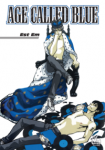
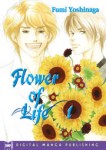
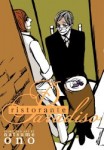
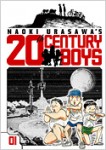
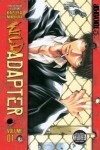
July 6th, 2010 at 4:00 pm
[…] here to read Brigid and Martha’s recommendations; click here to read Robin’s. Have a title you’d like to suggest? Let me know in the comments […]
July 6th, 2010 at 4:49 pm
Thank you for the recommendations…I’m a huge “Wild Adapter” fan, as well as a fan of the two Saiyuki titles, and I recently highlighted those titles in a manga display at my library. Fingers crossed that Wild Adapter continues, and that the final volume of Saiyuki Reload sees print in the US soon.
July 8th, 2010 at 8:04 am
20th Century Boys is a complex, engaging read that I would liken to the tv show Lost. I highly recommend it and anything else by Urasawa! :)
July 8th, 2010 at 9:27 am
[…] few moments to go read some great pieces on the best manga you aren’t reading by Brigid Alverson, Robin Brenner and the aforementioned […]
July 8th, 2010 at 11:24 am
The majority of the titles you mentioned are aimed at adults. Most libraries have their manga collections for tweens and teens. That’s really why so few have picked them up :-)
July 8th, 2010 at 11:54 am
Momo, while I agree that may be why these aren’t more collected, I don’t feel that’s a valid justification any more. I don’t mean that as an attack on you, but more the way libraries are currently thinking about purchasing graphic novels. The excuse doesn’t hold water any more for me. Many of the first manga and anime fans in the US were adults and they continue to be a strong audience for titles of both mediums. There are many strong series being published now for adults, and they should have a section just like the teen collections do (and they shouldn’t just be crammed in with the teen collection.) Suppli, 20th Century Boys, and Ristorante Paradiso have all come out relatively recently, when more libraries SHOULD be waking up to the fact that they have adult patrons who want to read this stuff!
Aside from that point, Flower of Life and Town of Evening Calm, Country of Cherry Blossom were both on the Great Graphic Novels for Teens list and Twin Spica and Cat Paradise are both recommended for teens.